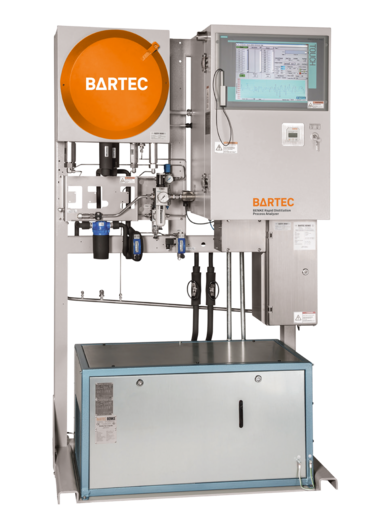


Rapid Distillation Process Analyzer

TF:
003933-HW-WIN-O33
Overview
To remain competitive, today’s refiners must employ all optimization and product control techniques available. The use of online physical property analyzers is one of the key features to reach those objectives because they measure important quality properties in the process directly.
| Technology | distillation |
|---|---|
| Method | correlates with: ASTM D86, DIN EN ISO 3405, IP 123 |
| Sample at inlet | filtered 50 μm, no suspended water, bubble-free, transparent, Cloud Point 0 °C 20 to 40 l/h 1 to 3 bar (14.5 to 43 psi) max. 50 °C, temperature change: max. 1°C/min, |
| Sample at outlet | atmospheric pressure |
| Electrical data | max. 8 outputs (4 to 20 mA; 1000 Ω), active isolated on request 4 to 20 mA; 160 Ω DC 24 V; max. 0.5 A; sum alarm Ready/Come-Read, Power identification Validation identification, Analysis Cycle Active high: DC 15 to 28 V; low: DC 0 to 4 V Reset, Inhibit, Stream request, Validation request, Decoking request, Automatic stream switching |
| Communication | MODBUS RTU/TCP (RS485, RS422, VDSL/FO (IS) MODBUS/TCP via FOC is remote software with modem, ISDN, Ethernet via VDSL modem FO (FS) |
| Ambient conditions | operation 5 to 40 °C (41 to 104 °F) storage -20 to 60 °C (-4 to 140 °F) operation 5 to 80 % relative humidity, non-corrosive; storage 5 to 80 % relative humidity, non-corrosive IP 54 (comparable with NEMA 13) |
| HMI | touch display 19" remote access on request cyber security operating system Windows10 enterprise LTSB Bartec Benke control software PACS |
| Process connections | tube fittings: typically Swagelok 6mm/12mm/18mm; others on request sample inlet up to 2 sample streams and 1 validation stream sample outlet vent line (if required) coolant (if required) |
| Weight and dimensions | approx. 300 kg (W x H x D) approx. 1150 x 1900 x 710 mm free space right: 150 mm/left: 100 mm |
Distillation is a physical method of separating the component substances from a liquid mixture by selective vaporization and re-condensation. Distillation is based on differences in volatilities of the components of the liquid mixture. The distillation curve is one of the most common quality parameters of liquid hydrocarbons such as naphtha, gasoline, kerosene, diesel and gas oil.


